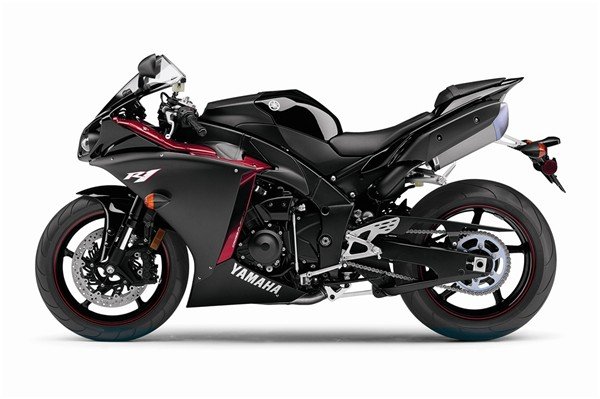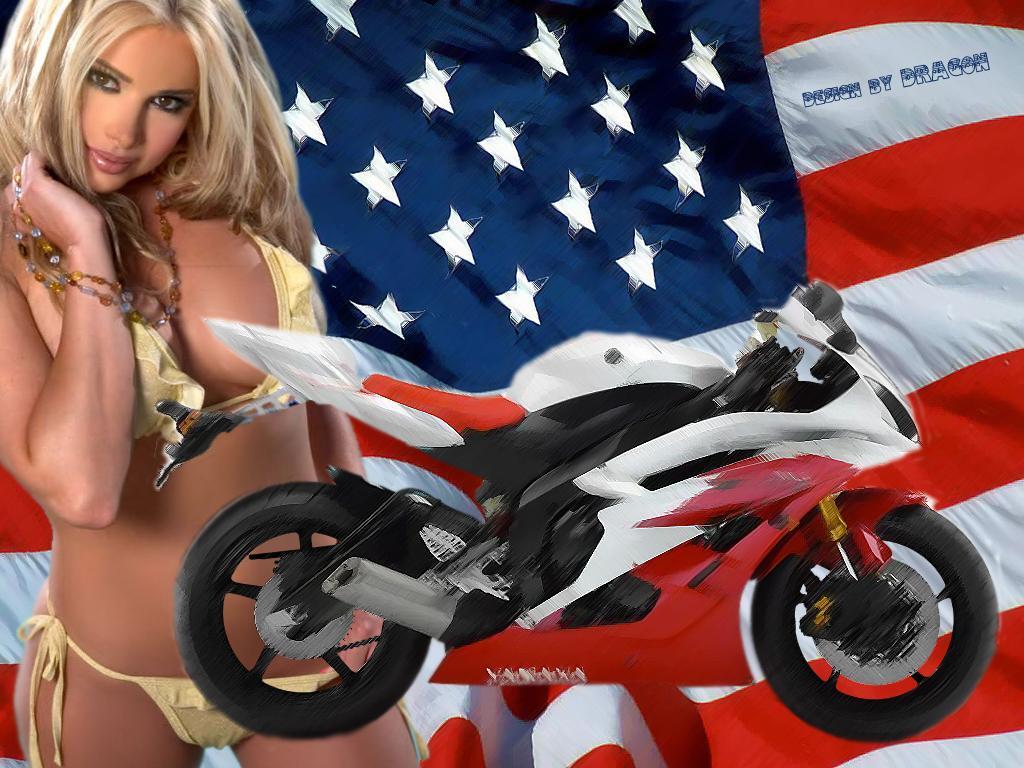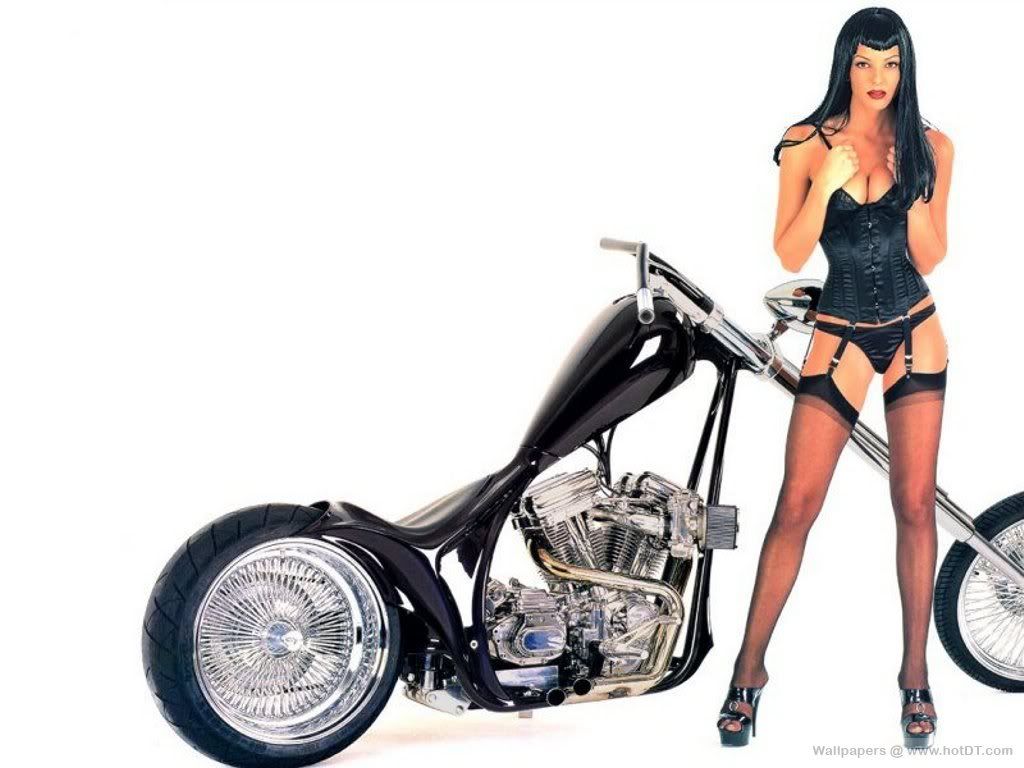|
|
|---|
Wednesday, August 12, 2009
 Regarded by many as the ultimate "headbangers" bike, the RD400 was endowed with the dna of the companies two
Regarded by many as the ultimate "headbangers" bike, the RD400 was endowed with the dna of the companies two
stroke road racing twins. Vivid acceleration, good handling, excellent brakes and a potential 110mph top speed
combined with good looks to ensure the models popularity both on the road and on the track.
Quick pre-LC street racer. Fast enough for almost anyone with demon accelaration, but weak brakes. Engine wear
will be the big problem along with rising prices caused by the Jap Classic brigade. Buy the final E-version
with cast wheels and electronic ignition. Original pipes totally unobtainable. 398cc 2-stroke twin. 40hp,
365lb, 45mpg, 105mph.
The whooping, tire-smoking, Kawasaki triples. The smooth, civil, dependable three-cylinder Suzuki GTs. Even
the venerable Suzuki T500 twin. Kawasaki and Suzuki once manufactured two-stroke motorcycles exclusively, but
now four-stroke bikes hold sway over their American showrooms.
It wasn’t government regulation that doomed the road-going two-stroke motorcycle. Nor a shattering improvement
in four-stroke technology. It wasn’t the industry’s lack of faith in the viability of the two-stroke design.
Americans just don’t want motorcycles that go poppity-ding. As far as they are concerned, engines with cams
and valves and a hearty exhaust note belong on the highway. Engines that go poppity-ding belong in lawnmowers
and chainsaws.
There’s only one two-stroke street motorcycle in the American market now, the Yamaha RD400E. Ironically it’s
the same motorcycle that did much to foster the enduring myths of the two-stroke performance. In its previous
R5 and RD350 incarnations, it fouled spark plugs, made indifferent fuel milage, did wheelies at the slightest
provocation and had a torque curve as steep as the back of God’s head.
Of course, the RD400 is pretty civilized now. When sales of the RD350 began to taper off in 1974 and 1975,
Yamaha gave its rowdiest high-performance motorcycle 50 more cubic centimeters and some friendlier manners.
The engine became more flexible, the ride turned soft and the seat got thicker. As a result, the RD is as
docile around town as a Honda Hawk. You can slog it between the stop signs with a minimum of noise and
gear-changing like a commuter bike. On the freeway, you slip the gearbox into sixth and loaf along at 4500
rpm.
In fact, -if you fail to venture into the upper limits of the RD's tachometer you'll notice this two-stroke is
no harder to ride than most other motorcycles. It doesn't take more than a half-hearted stab at the
kickstarter to urge the RD to life. You could catch your pants leg on the lever and still light it off. But
instead of being rewarded with a sound like sheetmetal screws rattling inside a glass jar, you'll hear the
flat, hollow crack of a two-stroke, as if a particularly expensive sort of popcorn were being brewed up. It
takes a little care to get the RD rolling because of a lack of heavy flywheel effect and an abrupt clutch
engagement, but only a little care. And when you crank in more throttle, the RD always responds promptly and
smoothly. All sorts of carburetion strategies have been tried to make four-stroke engines respond efficiently,
but simple Mikuni slide/needle carbs do the job on the two-stroke RD.
The only glitch in the RD400's performance is a tendency to surge at lightly-loaded cruising speeds. It's
particularly annoying while riding in traffic. The only remedy is to accelerate slightly or shift into a
higher gear to increase engine load.
Other than this complaint about surging the RD400 never fails to provide a comfortable ride. The
rubber-mounted engine, exhaust pipes, foot pegs, handlebars and gas-tank filter out most of the vibrations. So
if you're intent on comparing this motorcycle to the gaggle of 400-cc four-stroke twins on the market the
Yamaha performs far better than the myths about two-stroke idiosyncrasies would have led you to believe.
Underneath its raincoat of civilized manners lurks the heart of a flasher. The RD is still a high-performance
machine. Below 4000 rpm. the RD accelerates slowly but smoothly. It might even seem that the throttle simply
acts as a volume control for engine noise. But as the tach winds past 4000 rpm, power builds until the engine
bursts into life at 5500 rpm. Between 5500 and 8000 rpm, the Yamaha is on the pipe, pulling like a roadracer
until it runs out of breath at the 8500-rpm redline.
If you want to keep the RD in its pocket-rocket mode, you have to enjoy using the gearbox. Unlike Suzuki's old
GT two-strokes, the RD wasn't designed for high-gear roll-on acceleration. When you want to climb a hill or
pass another vehicle, it's best to shift down a gear. Unfortunately, some riders during our test complained
that too much pressure on the shifter was required to change gears, possibly because of a shift-return spring
that's too stiff. Missed shifts into sixth gear were another complaint. We understand that this behavior is
caused by the shift mechanism failing to rotate the shift drum far enough. An adjustment of the shift-stop
eccentric should cure this problem however.
On the whole, the RD400 is the sort of motorcycle that rewards a rider who wants to participate. You don't
just straddle the RD400—you operate it. When the engine is warm, twisting the throttle wide open as you come
off the line will cause the front wheel to clear the ground by a few inches. But when the engine is relatively
cool, the same application of throttle can produce an attention-getting wheelie. But if you keep the skyshots
under control, the Yamaha will hustle down the quarter-mile in 14.35 seconds at 90.4 mph, several heartbeats
ahead of its nearest rival, the Honda Hawk (14.73 seconds).
To match that performance, Yamaha added mag wheels and disc brakes to the RD formula at the same time it
bolted on self-cancelling turn signals and a thick seat. The Yamaha's light weight, good tires and strong
brakes also encourage you to get the most out of braking. Under controlled conditions, the RD screeched to a
124-foot stop from 60 mph and halted in 28 feet from 30 mph. Unfortunately, it's also easy to lock the brakes
unexpectedly, especially the rear disc. This problem with the rear brake led to some large bobbles when diving
into the turns of a few mountain roads.
During serious swoop sessions, you really begin to appreciate how much you can demand from the RD. But at the
same time the bike also demands a lot from you. Though it's hardly a flyweight anymore, the RD is still
lighter than anything else that's as fast. And the weight feels as if it's in the right place. So you can
flick the Yamaha from side to side almost as fast as you can think. The steering is ultra-quick and the bike
leans over easily, but it's still possible to make sudden changes in your line, even at the limit. You do,
however, have to be aware of changes in the road surface while riding this Yamaha. A cam-her change, humps or
even a change in your line at the wrong time can cause the RD to get wiggly. This flaw seems partially a
function of the soft suspension and, on our test bike, rear shocks that lost some damping after only a few
thousand miles.
When you're trying real hard in the swoops and darts, the RD will run out of cornering clearance long before
it runs out of grip. Although the suspension has been stiffened slightly since we last tested the RD400C in
1976, sporting riders will still have an easy time of grinding the footpegs because their mounting brackets
are routed beneath the pipes. But at least the rubber-mounted brackets allow the footpegs to flex a little
when they touch down so they don't help you off the road.
There are other side effects to keeping a two-stroke motorcycle like the RD on a leash in your garage besides
its wonderfully schizoid personality. Compared to a four-stroke motorcycle, maintenance requirements are
limited. There are no valves or cam chain to adjust. No oil filter. Only ignition timing and carburetor
synchronization are required to help the RD400 feel its Wheaties. Our bike smoked heavily just after starting
and when run hard after a casual slog, but we averaged just over 400 miles to a quart of injection oil. Not
all of that oil went through the engine, however, because a construction error in the oil tank breather
allowed it to puke Yamalube for nearly 100 miles after each top-up. Yamaha has never heard of this problem
before. Certainly our two previous RD400 test bikes never leaked, so we must assume this oil-loss was peculiar
to our test bike. And in over 4000 miles of all kinds of testing, our bike never threatened to foul a spark
plug.
The only problem with the RD400 is the fact that you're forever forced to explain so much to the inquiring
public. You have to explain that this motorcycle doesn't foul spark plugs, that it doesn't smoke badly, and
especially that it won't try to spit you out of the saddle every time you twist the throttle a little
aggressively.
 Considering the crisis of confidence in the two-stroke motorcycle as a whole, even the persistent appearance
Considering the crisis of confidence in the two-stroke motorcycle as a whole, even the persistent appearanceof the RD400 in the Yamaha line-up must be explained. Because the RD400E is virtually identical to the last
year's D-model, Yamaha manufactured these motorcycles last fall to avoid the 1978 emissions regulations and
market this bike as a new model.
We can only speculate that Yamaha itself truly appreciates the RD400's stature as both the last remaining
two-stroke motorcycle and the only small-displacement, high-performance road bike on the market. Still, tough
new emissions laws are waiting in the wings. Yamaha seems prepared to deal with the problem because there will
be a 1979 RD400. But Yamaha's faith in this motorcycle must be matched by renewed public enthusiasm for this
company's interpretation of two-stroke performance. Because if RD400 sales continue to decline. Yamaha will
find it economically unfeasible to continue selling the bike in this country.
If any bike can turn the tide in the war against the two-stroke. it will be the RD400. It has helped to
explode the two-stroke myths. It is the most modern, most completely finished two-stroke motorcycle ever cut
loose for the American market. Even more compelling is the fact that the RD is just a good motorcycle. The
measure of its design concept is the fact that the RD can alternately perform as a dead-reliable commuter bike
and as a keen-edged street-racer. And that is why it should survive.
TECH PROBE The RD400E is not significantly different from the RD400C introduced two years ago. The machine did not have
to change to keep up with its competition because it has no competition. Most of the machines that provide
equal or superior performance weigh almost 100 pounds more than the RD400. And most of them have ten times as
many parts to wear out. And few motorcycles of any size or type are as comfortable to ride as Yamaha's RD.
The RD400 is an exceptional motorcycle partly because of—not in spite of—its scornful two-stroke engine and
partly because of the machine's careful engineering and many years of development. The RD's crankcase seals
are one example of Yamaha's thoughtful engineering. Crankcase sealing is commonly done with neoprene lip-type
seals. Though their life is long, these seals do wear out. When the seals are located at the ends of the
crankshaft they can be easily replaced, but on multi-cylinder engines the seals between crankchambers can
normally be replaced only by pressing the crankshaft apart. And that's a big job.
Yamaha solved this problem (though they were not the first to do so) by using a labyrinth seal between the
crankchambers. The labyrinth seal does not actually contact the crankshaft and therefore will not wear out.
Labyrinth seals work by creating a maze (a labyrinth) that discourages leakage. They are not positive seals
because they do leak, but changes in pressure between crankchambers are so rapid, even at idle, that the
leakage is insignificant.
The thoughtfulness of Yamaha's engineers is also evident in their efforts to prevent light-load surging. To
lessen surging, the exhaust skirt of each RD400 piston has a notch at its bottom that connects the crankcase
directly with the exhaust port at top-dead-center. There is also a 4-mm hole located 13 mm above the exhaust
port and connected with the exhaust port. This small passage not only reduces surging but makes the engine
easier to kickstart as well by lowering cylinder pressures at cranking speeds. At higher engine speeds the
passages are too small to significantly affect performance.
Yamaha has used reed valves for many years, but it is worth recalling that they were one of the first
companies to use them successfully in high-speed engines. At high speeds the reeds flutter at an incredible
rate and as a result their life span was short. The technique that Yamaha adopted, which has since become the
norm, was to apply a thin rubber coating to the reed block. As the stainless steel reeds repeatedly slam
closed against the reed block, the rubber provides just enough cushion to prevent breakage.
In-line twin cylinder engines have a reputation for being shakers. Many twins, the Suzuki G5400, the Honda
Hawks and the Kawasaki KZ400 for example, use supplementary counterbalance shafts to offset inherent engine
imbalances. But these shafts are heavy and costly, and their drives are sometimes both noisy and troublesome.
But when of the same configuration, a two-stroke engine will be smoother than a four-stroke engine because the
two-stroke has less reciprocating mass and its power impulses are softer and more frequent. Still, the RD400
engine does vibrate.
Rather than complicate the engine with auxiliary balancers (which they have used on several engines), Yamaha
has built a smooth motorcycle by isolating the engine's vibrations from the rider. The engine, footpegs,
handlebars and fuel tank are all mounted in rubber. The engine vibrates but most of the vibration does not
reach the rider.
The flexibility of the motor mounts may in some small way affect handling, however. When thrown into a hard
sweeper, the RD400 does not feel as solid as an RD350. Certainly the 400's soft suspension accounts for much
of this feeling but the rubber engine mounts might also have an effect. The RD350 and RD400 use very similar
frames but the solidly-mounted RD350 engine stiffened its frame. Because the RD400 engine is rubber mounted,
it contributes very little to the rigidity of its chassis.
As a consequence, the RD400 frame would have to be more robust to achieve the rigidity of the RD350 chassis.
The RD's clutch is basically a conventional wet, multi-plate design but for one interesting characteristic:
The drive plates are not symmetrical discs. Some material has been cut from one side of each disc to
intentionally make them out-of-balance. As the clutch spins, centrifugal force holds the light side of the
plates against one side of the hub and so prevents the plates from rattling. Also when the clutch is
assembled, the light sides of the plates are staggered so that the clutch assembly is not thrown
out-of-balance. Several other Yamaha 'models share this feature.
Another interesting, if less unique, clutch detail is the use of rubber rings between the plates to prevent
clutch drag. When the clutch is engaged, the clutch springs force the plates together and slightly compress
the rubber rings. When the clutch is disengaged, the rubber rings expand and help separate the plates
completely.
The RD400 engine/gearbox unit is a light package despite the motorcycle's 353 pounds. The RD400 is about 25
pounds heavier than an RD350 but the 400 engine is only about five pounds heavier than the 350 engine. The
RD400 motorcycle is actually heavier than the four-stroke XS360D and is as heavy as the Honda Hawk Type I (the
kickstart-only model), but the RD engine is more than 20 pounds lighter than the Hawk engine. Any way we look
at it, the RD400 is about 20 pounds heavier than it should be.
We suspect that some of this weight is in the wheels and brakes. Yamaha claims that each RD aluminum wheel is
only a quarter of a pound heavier than a wire-spoked wheel, but we think they may have been using a very heavy
wire wheel in the comparison. The RD400 also has double-action brake calipers at both wheels, though most
machines use lighter single-acting calipers on the front wheels.
 Even though the RD400E could be a few pounds lighter, it is a well thought-out motorcycle. It is also,
Even though the RD400E could be a few pounds lighter, it is a well thought-out motorcycle. It is also,unfortunately, an unusual motorcycle.
We recently attended a Motorcycle Industry Council conference on motorcycle exhaust emissions regulations. In
addition to the depressing information that was the subject of the meeting, we were told that 1978 marked the
virtual end of the road-going two-stroke motorcycle. We have heard this rumor too many times.
Those people, at the MIC conference and elsewhere, who have doomed the two-stroke road bike to extinction
insist that the facts could hear no other logical conclusion. Fact: Shortly after the Federal government made
evident its intention to regulate motorcycle emissions, Suzuki began developing four-stroke engines and
subsequently stopped importing two-stroke road machines here. Fact: Yamaha evaded the 1978 emissions standards
by producing all the RD400Es destined for the United States before January 1, 1978. Deduction: Two-stroke
engines are not able to meet Federal exhaust emissions regulations.
If Sherlock Holmes had been so adept at the science of logic, Professor Moriarty might have been the youngest
King of England. For if any of the soothsayers at the conference had bothered to ask, Yamaha would have
informed them that there will, in fact, be a 1979 emissions-legal RD400.
When we tested the RD400C in January 1976 we said it was the best bike in its class. It was fast, comfortable,
simple, practical and relatively light. In the following months we received many letters from people who
bought RDs on the basis of our test and who said they were in complete agreement with our conclusion.
The two-stroke engine could be, and perhaps should be, the powerplant of the future. But if the public
continues to believe the old wives' tales; if they ignore this final example of the type; we can look forward
to riding motorcycles that are heavier, more complicated and more expensive to maintain than they have to be.
Labels: Yamaha RD400






















0 comments:
Post a Comment